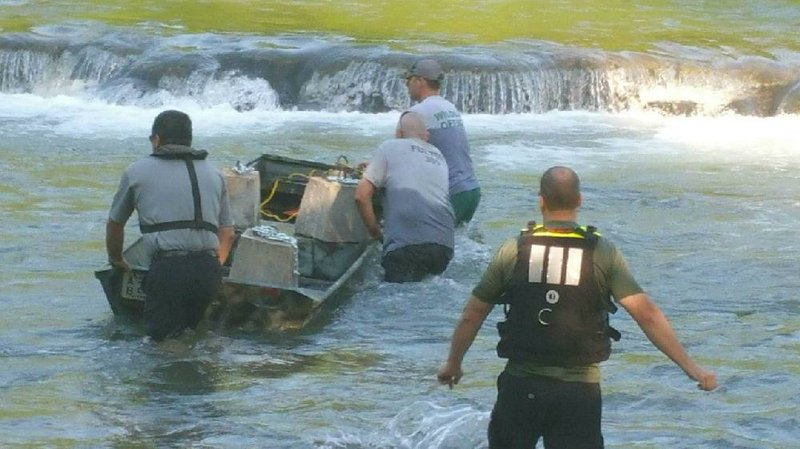Authorities have identified the kayaker who was killed Saturday afternoon when a sinkhole opened in the Spring River in northern Arkansas.
Arkansas Game and Fish Commission spokesman Keith Stephens said Monday the victim was 64-year-old Donald Wright, who worked as the executive director of the halfway house Life Recovery Center in Searcy.
Wright was floating with some of the home's residents in the area known as Dead Man's Curve below Sadler Falls when a resident's canoe got caught in the whirlpool that resulted from the sinkhole, Stephens said. Wright tried to help, but his kayak capsized and was sucked into the whirlpool.
He drowned a few minutes later, around noon Saturday. The canoeist was treated at a nearby hospital and released, Stephens said.
The river is still open, but authorities warned visitors to avoid the area. The Game and Fish Commission barricaded the section around the sinkhole with ropes and buoys.
"We're not sure if it could happen again," Stephens said. "It’d be great if we had a crystal ball that could tell us that. I would encourage people to make sure when they’re floating the river to not get into areas that may be difficult unless you’re an expert."
Although sinkholes are considered common in northern Arkansas because of the type of underlying bedrock in the area, it is rare for a sinkhole to open in an active river, said Bill Prior, a geologist at the Arkansas Geological Survey.
A sinkhole occurs when bedrock particularly susceptible to weathering — like limestone — begins to crack. It deteriorates further when water seeps into the crevices and continues to eat away at the rock, forming caves and springs.
When the roof of a cave collapses, it causes a sinkhole. When that process occurs under water, "It's like pulling the plug out of a drain," Prior said. "The water just rushes in."
Geologists don't know where that water is going until they investigate, but Prior said it is possible that it will re-emerge in a spring downriver.
Experts said they aren't sure if another sinkhole could open in the area, but engineers will assess the region this week and look for a solution, according to a Sunday news release from the Game and Fish Commission.
